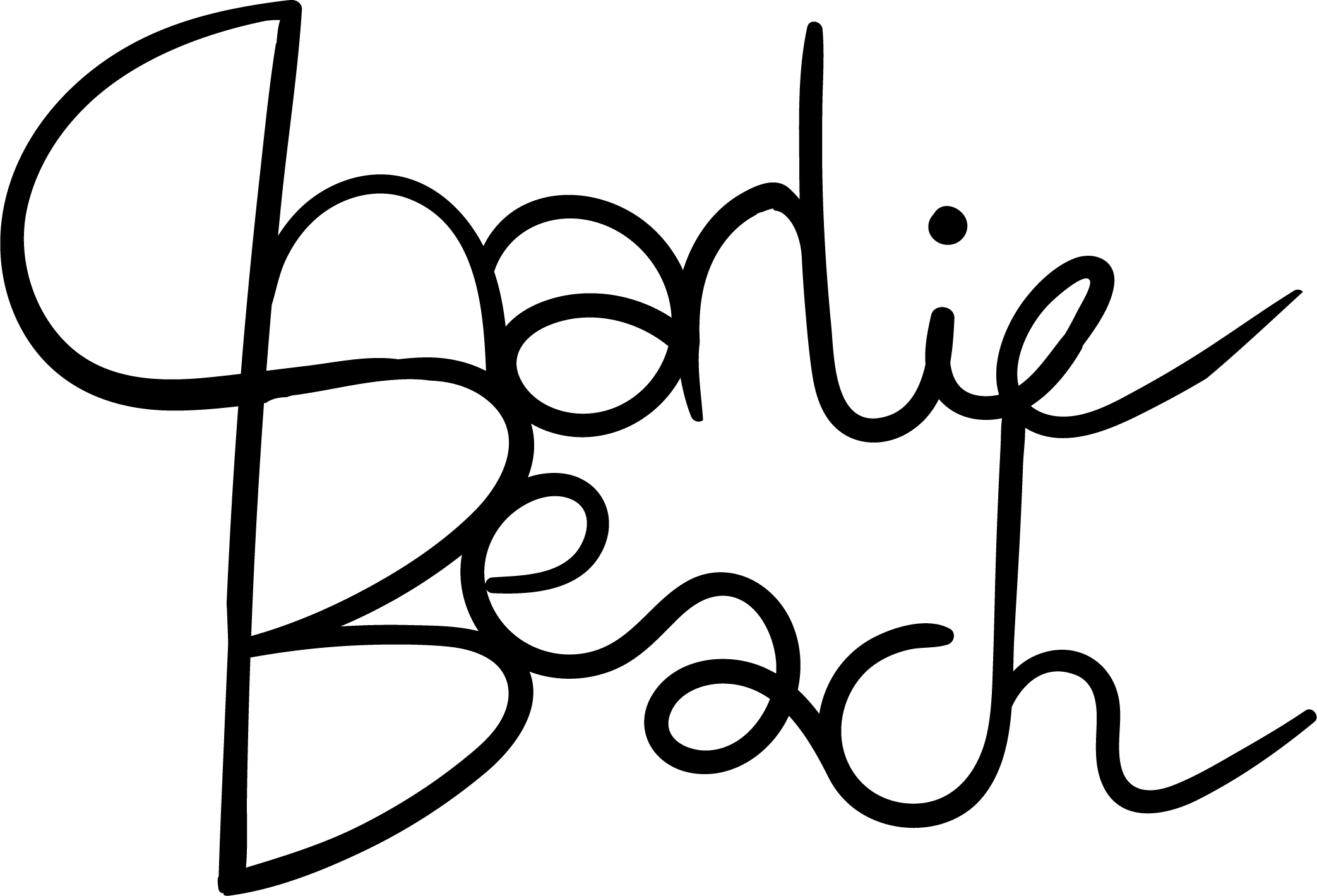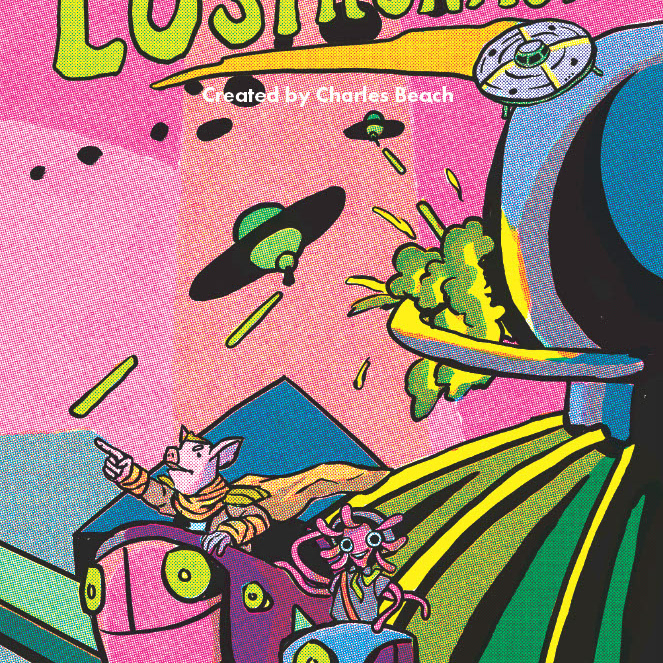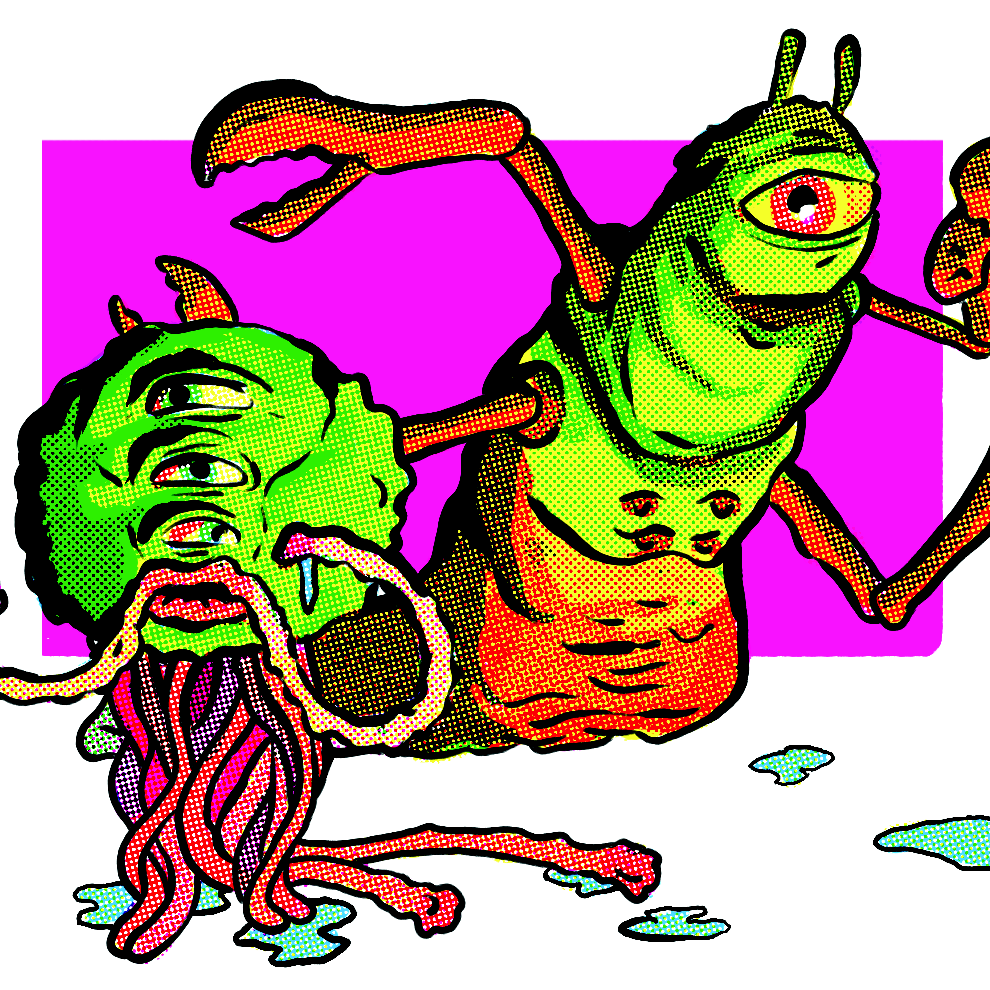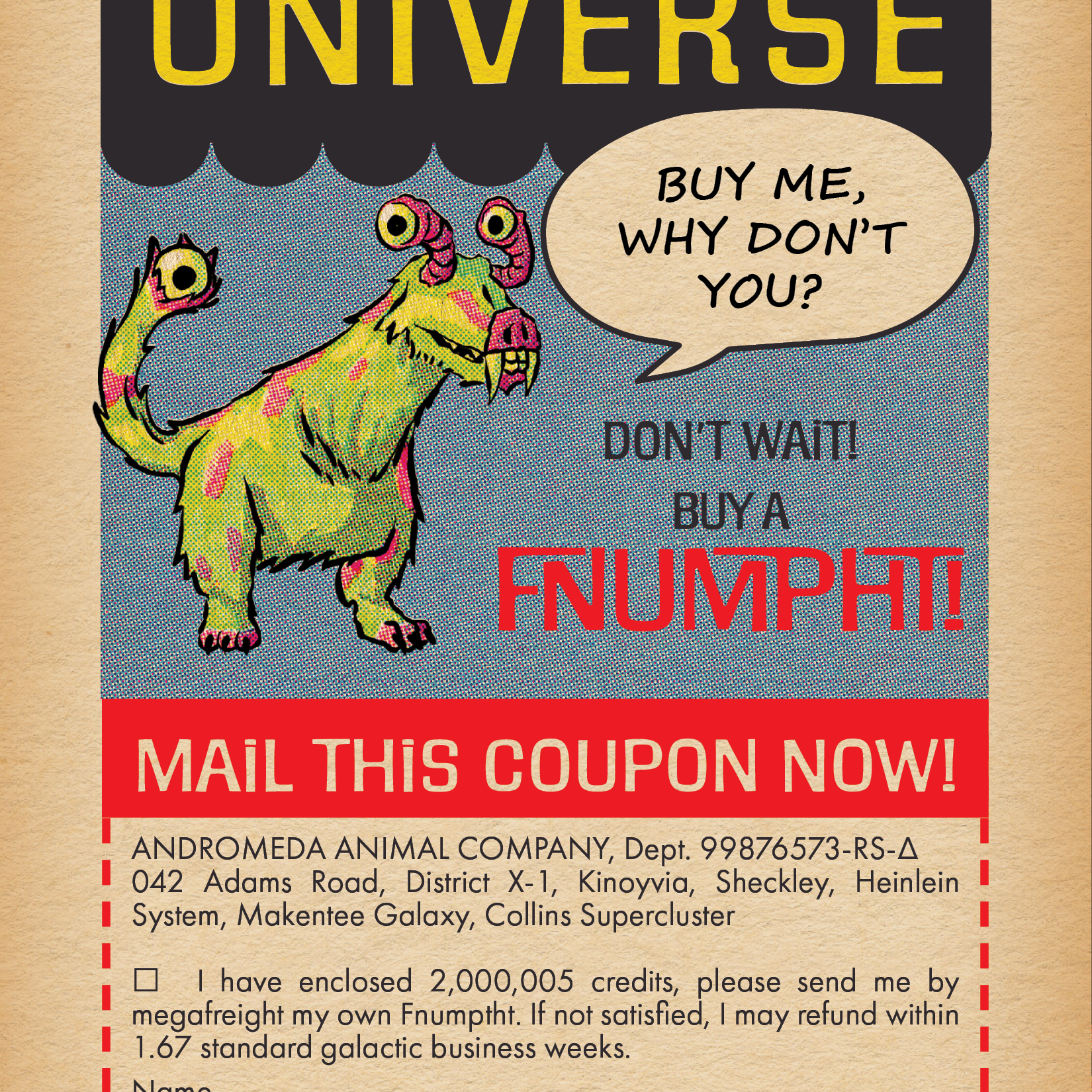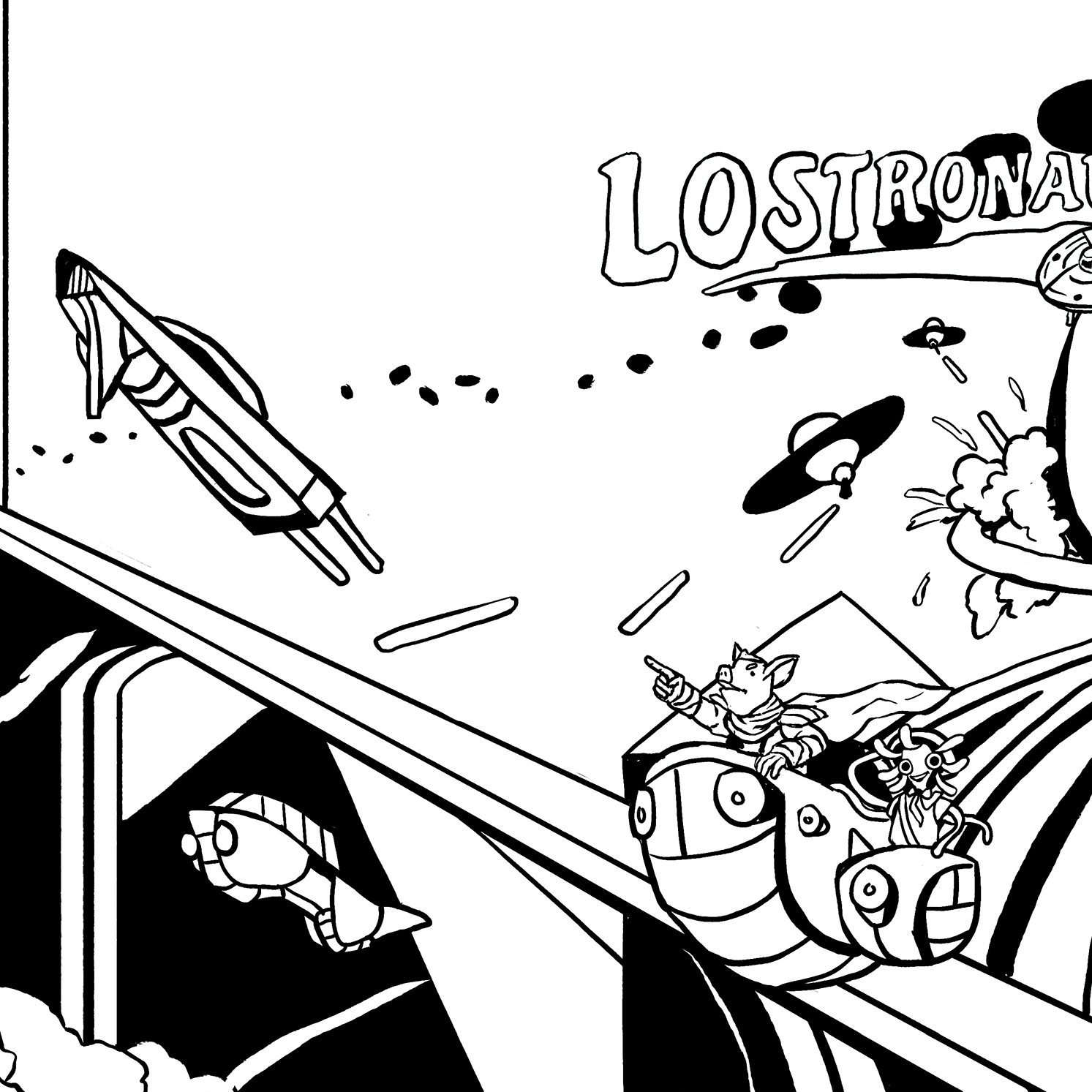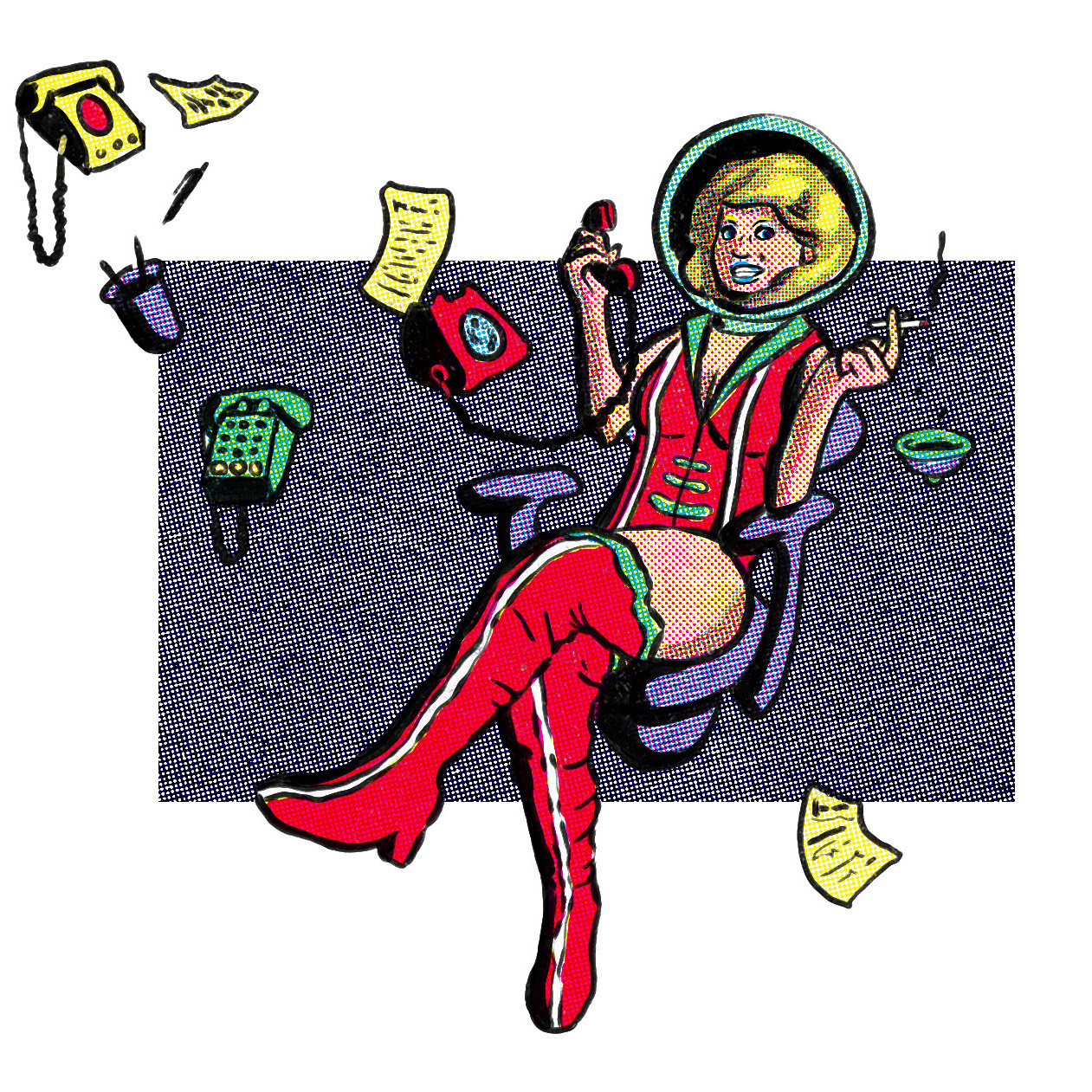For Lostronauts, my aim was to make a cooperative, DMless, 1960’s sci-fi themed tabletop roleplaying game. A vague idea, I know, but with around 4 months of work, I think I made something of it. Besides the text itself, I set out to create a total of 22 illustrations, including 1 wrap-around cover, 4 section covers, 4 enemy drawings, 7 archetype drawings, and 6 spot illustrations, which I successfully achieved in time for production. I had initially planned for 24 pages, though the final book wound up at a solid 32.
The idea behind Lostronauts came to me from a variety of 1960’s science-fiction stories. Flying into space aimlessly, countless adventurers would stumble their way through strange planets and random extradimensional portals, all the while being accosted by aliens who look suspiciously like people in costumes. This sort of approach to sci-fi felt warm and inviting to me, focusing less on the strictly scientific, and more on the frontier of the imagination. The exploration-centric stories felt like a natural fit for a tabletop roleplaying game (or TTRPG), where player involvement could make an endless series of fantastic adventures through the great stellar wild.
Somewhat out of my usual style, I created the art for Lostronauts with line art and benday coloring, aiming to evoke old comic and pulp magazine art. Done digitally, I nonetheless wanted to emulate physical media, especially material from the 60’s. Though I usually default to drawing more sculpturally, I thought that line art would more appropriately convey the vibe of an old comic book. Additionally, the line art style let me worker quicker than otherwise, letting me keep reasonably on schedule.
The color was done in overlapping layers of cyan, magenta, and yellow, which combine visually to create a range of hues. The distinctive appearance of this coloring method creates a pattern of dots across the art, which itself has become emblematic of printed art up to the 90’s. Emulating old printing techniques this way also makes the transition from digital art to physical media much more true to how I originally planned it, since I’ve already made the image in the colors used by the printer.
The layout of the book itself was heavily inspired by Galaxy Science Fiction Magazine, a monthly sci-fi anthology magazine published from 1950 to 1980. Using reference copies, I matched up the margins, typography, and layout to be as reminiscent as I could. Its way of very densely assembling text also proved useful to me by reducing the overall page count, making the book itself easier to produce. Besides just layout, a lot of the ideas and themes used throughout the book are also inspired from stories in old sci-fi magazines and publications.
The big thing I want people to feel from Lostronauts is the same thing I feel enjoying any old sci-fi: inspiration. The point of all my art isn’t to imply a right way to do a sci-fi adventure, but instead to show how much fun it can be to make your own path doing it. If I can make anyone feel excited to make up space shenanigans with their friends, I’ll be happy with what I’ve made.
Now that I’ve finished things, my first plan is to get into contact with an artist’s agent and hopefully get work doing illustrations for hire. I intend to sell physical and digital copies of Lostronauts; if the game builds up enough interest, I’ll work on a 2nd edition intended for larger scale production. I’d hope to expand upon the lore further, and build out the narrative aspects to potentially make for more complex narratives.
